Backpacking Meal Planning Basics

You may think that gear packing is the only challenge for outdoor activities. Well, that's not true. Second, to gear, meal planning for backpacking is also daunting. It takes years of practice to understand what type of food you should backpack for your hike or camping trip. However, this challenge is quite easy when you have a general idea of what to pack and how much to pack!
That's why we have created a brief guide for you that covers all the essential aspects of meal planning for backpackers. We’ve divided it into three phases: how much to pack, what to pack and how to store it. We have also shared some products that will make your backpacking meal planning efficient. What's interesting is that all of these products are available at Skuxs.
In terms of calories, you should pack 2,500 to 4,500 calories of food per backpacker per day. If you plan to camp or hike for 3 days, you should pack 7500 to 13,500 calories of food per person. Speaking of food in terms of the amount of weight, a general thumb rule is to pack 18 to 22 ounces of food per day per backpacker.
If you are young, muscular, larger in size, and on an intense trip, you should aim to pack 22 ounces (4,500 calories) per day per person. If you are opposite to this description, then packing 18 ounces (2,500 calories) per day per person would be sufficient.
In addition to the sleeve, there is also a separate deluxe organizer panel. As Hatchet Backpack aims to bring versatility and functionality to your life, it also has some other useful features. The backpack also has a tablet pocket that can be used to store your accessories or other items.
It also has dual side pockets for the water bottle. Not just this, Hatchet Backpack is very easy to carry. With its adjustable sternum straps, fully padded shoulder straps, and side compression straps, carrying a hatchet is not a hassle.
Some things that will help you when meal planning for backpacking are:

Yes, you can get all these separately, but the Genesis Basecamp System comes at an amazing price. What makes this basecamp system a must to have is that its dual burner can function not only as a standalone stove but can also be coupled with another jet link compatible stove.
You can create an outdoor cooking range effortlessly by combing the Jetboil's dual burner with the Luna satellite burner. Manufactured with 10-inch ceramic-coated material, Jetboil's Fluxpot and nonstick fry pan allows you to enjoy home-cooked food even in the wild.
With the beastly 10,000 BTU heating system, you can boil water, cook food, make coffee, or melt snow in just 3 minutes. The attachable windscreen delivers exceptional performance in any weather.
Your basic meal storage options include:
Hanging food on the tree is also an option. However, it's not very effective unless you camp on a ground home to rodents. Bears and other wildlife animals are quite skilled these days. They can easily find their way up to the tree branch. Not to mention finding the perfect tree with desired height and strong branch is a challenging task.
The third option is to sleep on or with your food. According to statistics and expert backpackers, it is the least recommended food storage method. This method is recommended for areas populated with animals like bears, boars, etc.
The pot's capacity is 25.4 oz (750ml) when measured up to the top. The total weight of the Toaks Titanium pots is around 3.0 oz (86g) without a lid. It can nest the TOAKS Titanium 375ml Cup, TOAKS Titanium 450ml Cup, TOAKS Titanium 450ml Double Wall Cup, or TOAKS Titanium Backpacking Wood Burning Stove (small).
Happy Backpacking!
That's why we have created a brief guide for you that covers all the essential aspects of meal planning for backpackers. We’ve divided it into three phases: how much to pack, what to pack and how to store it. We have also shared some products that will make your backpacking meal planning efficient. What's interesting is that all of these products are available at Skuxs.

How Much Food is Enough for Backpacking?
One of the common mistakes that most backpackers make is that they overpack food. We get it; nobody wants to starve out in the wild. But overpacking is not the solution; smart meal planning for backpacking is.In terms of calories, you should pack 2,500 to 4,500 calories of food per backpacker per day. If you plan to camp or hike for 3 days, you should pack 7500 to 13,500 calories of food per person. Speaking of food in terms of the amount of weight, a general thumb rule is to pack 18 to 22 ounces of food per day per backpacker.
If you are young, muscular, larger in size, and on an intense trip, you should aim to pack 22 ounces (4,500 calories) per day per person. If you are opposite to this description, then packing 18 ounces (2,500 calories) per day per person would be sufficient.
Product Recommendation: Hatchet Backpack by JanSport
Designed for the outdoors, the Hatchet Backpack by JanSport is an innovative combination of functionality, style, and versatility. The backpack features a modern design with a versatile sleeve. The sleeve has enough space to fit perfectly a 15-inch laptop.In addition to the sleeve, there is also a separate deluxe organizer panel. As Hatchet Backpack aims to bring versatility and functionality to your life, it also has some other useful features. The backpack also has a tablet pocket that can be used to store your accessories or other items.
It also has dual side pockets for the water bottle. Not just this, Hatchet Backpack is very easy to carry. With its adjustable sternum straps, fully padded shoulder straps, and side compression straps, carrying a hatchet is not a hassle.
Product Highlights
- Internal zippered mesh pocket
- One main compartment
- Bonded leather trims
- Small side zippered stash pocket
- Web haul handle
- Padded
- Front zippered gear pocket
- Carabiner key clip

What to Food to Pack for Backpacking?
Whether going on a hike or planning to camp, you must be mindful of the weight. You don't want your backpack to be heavy. What type of food you should or shouldn't pack greatly depends on your personal preference. However, when backpacking, meal planning makes sure to pack food items that are light to carry, easy to store, and have a longer shelf life.Some things that will help you when meal planning for backpacking are:
- Pack what you like to eat.
- Bring as variety for meal backpacking to have a nice balance of sweet, salty, sour, and spicy.
- Make sure to include some fresh food items like vegetables and fruits.
- Pack your favorite spices like salt, black pepper, oregano, etc.
- In addition to water, also pack flavored beverages for your daily water intake.

Breakfast: For breakfast, you can pack the following food items or something similar that you like
- Sweet, like chocolate-covered cashews and M&M's
- Salty, like Pringles and corn nuts
- Sweet and salty, like yogurt-covered pretzels
- Real, like salami, dried fruit, and avocados
- Protein, like protein bars and beef jerky.
- Cold cuts
- Cheese
- Tortilla or bread
- Pasta
- Mushrooms
- Some green veggies like broccoli, Brussel sprouts, spinach, etc.
- Instant noodles
- Beans
- Rice
- Peppers
Product Recommendation: Genesis Basecamp System by Jetboil
The Genesis Basecamp System is an ultimate all-in-one cooking system manufactured to make your backcountry adventures hassle-free. This basecamp system features a Jetboil's dual-burner, the 5-litre Jetboil FluxPot, and a 10-inch ceramic-coated nonstick fry pan.Yes, you can get all these separately, but the Genesis Basecamp System comes at an amazing price. What makes this basecamp system a must to have is that its dual burner can function not only as a standalone stove but can also be coupled with another jet link compatible stove.
You can create an outdoor cooking range effortlessly by combing the Jetboil's dual burner with the Luna satellite burner. Manufactured with 10-inch ceramic-coated material, Jetboil's Fluxpot and nonstick fry pan allows you to enjoy home-cooked food even in the wild.
With the beastly 10,000 BTU heating system, you can boil water, cook food, make coffee, or melt snow in just 3 minutes. The attachable windscreen delivers exceptional performance in any weather.
Product Highlights
- Easy-to-clean
- Convenient and reliable lever igniter
- Compatible with standard 16.4 oz propane bottle
- Includes system carrying bag (8.5" tall x 10.75") with pocket for regulator fuel connection
- Efficient, compact folding windscreen design fits handily in small spaces
- Beastly 10,000 BTU heating system
- 5-liter FluxPot and 10-inch ceramic-coated nonstick fry pan
- Jetboil's dual-burner

How to Properly Store your Food?
While meal planning for backpacking is important, it is equally important to store your food properly. When you properly store your food, you prevent wild animals’ access to the food. It is a prudent step. You can easily find the suggested accepted methods of storing your food overnight outdoors on the internet.Your basic meal storage options include:
- Hanging your food on the tree
- Sleeping on or with your food
- Storing the food in bear-resistant storage canisters
Hanging food on the tree is also an option. However, it's not very effective unless you camp on a ground home to rodents. Bears and other wildlife animals are quite skilled these days. They can easily find their way up to the tree branch. Not to mention finding the perfect tree with desired height and strong branch is a challenging task.
The third option is to sleep on or with your food. According to statistics and expert backpackers, it is the least recommended food storage method. This method is recommended for areas populated with animals like bears, boars, etc.
Product Recommendation: Titanium 750ml Pot by Toaks
One of the handy items for backpackers is the Toaks Titanium 750ml Pot. The pot is durable, tough, and helps you to cook, but it can also be used to store food. The pot is manufactured using grade 1 or 2 titanium without any coating.The pot's capacity is 25.4 oz (750ml) when measured up to the top. The total weight of the Toaks Titanium pots is around 3.0 oz (86g) without a lid. It can nest the TOAKS Titanium 375ml Cup, TOAKS Titanium 450ml Cup, TOAKS Titanium 450ml Double Wall Cup, or TOAKS Titanium Backpacking Wood Burning Stove (small).
Product Highlights
- It comes with a lid with a lockable grip and a mesh sack
- Gradation marks in ml and oz.
- It can nest a 100ml gas canister and MSR pocket rocket.
- It can nest inside the TOAKS Titanium 1100ml Pot with Pan.
- It can fit into the TOAKS Titanium 550ml D103mm Bowl.

Final Thoughts!
Meal planning for backpacking takes practice. Test and trial are the only ways to understand what meal plan works best for you. While which food item you should pack is your choice, you should be mindful that you are not overpacking or packing food items that doesn't meet your daily caloric intake. You can also search the internet and read about other backpackers' experiences to understand what meals work best for backpacking. Cut to the chase, use these basic guidelines and incorporate them into your backpacking meal planning. And choose the best outdoor equipment from Skuxs.Happy Backpacking!

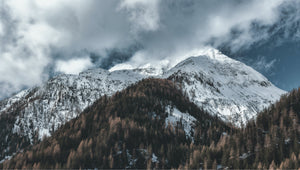
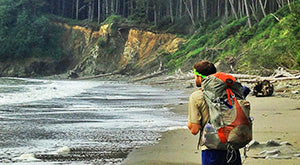
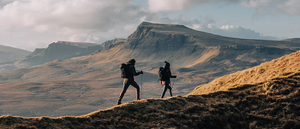

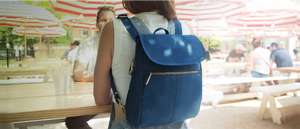
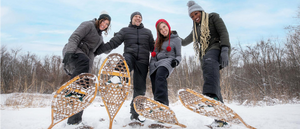
Leave a comment